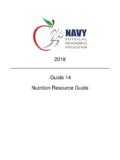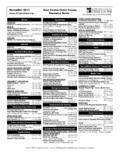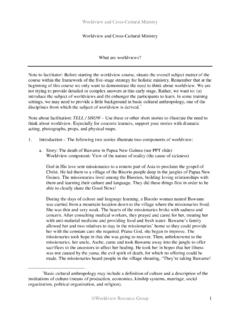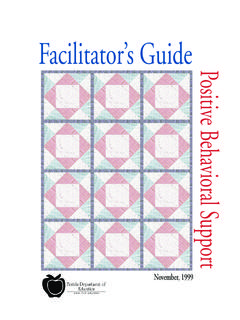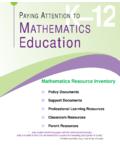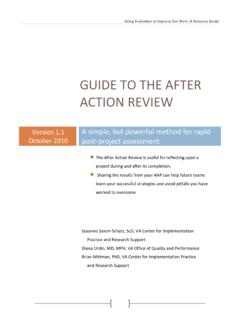Transcription of Facilitator’s Toolkit - UNHCR
1 _____ This facilitator 's Toolkit was adapted from the original designed by Action for the Rights of Children (ARC). Reach Out < > wishes to thank ARC for making the Toolkit available to the Project. facilitator s Toolkit Action for the Rights of Children (ARC) CONTENTS BRIEFING NOTES FOR FACILITATORS Page Using The facilitator s Topic 1: Principles of Topic 2: Planning for the Whole Process of Topic 3: Preparing to Facilitate a Training Topic 4: Participatory Training Topic 5: Introductions, Energisers and Quick Review Topic 6: Devising Case Studies, Role Plays and Topic 7: The Use of Audio-Visual Topic 8: The Use of Topic 9: Feedback and RESOURCES Further Reading ..83 Page 2 of 83 _____ ARC facilitator s Toolkit - Reach Out Refugee Protection Training Project 2005 Using The facilitator s Toolkit The Toolkit has been produced as a resource for people who will be facilitating training. It can be read alone as a basic introduction to facilitating training.
2 The content of the Toolkit is divided across several topics that broadly cover the following issues: Principles of learning; Guidance on preparing for training; Guidance on how to use the participatory training methods; Guidance on the writing and production of handouts and overhead projections; Suggestions for evaluating training. If you are an experienced trainer or facilitator , then you could use the Toolkit as a reference tool or as support material to update your current practice. If you are new to training or lack experience in facilitating learning, then you might find it useful to read all of the Toolkit and then use it as a support document to assist you in planning and carrying out your training. Acknowledgements A number of key documents were drawn upon to produce this Toolkit , including: Tim Pickles, Toolkit for Trainers, Pavilion, Brighton 1995. CMA Training Skills Pack, Community Media Association, London 1995. A Strategy for Enhanced Staff Development (Draft) , Office of the United Nations High Commissioner for Refugees, Geneva 2000.
3 We are grateful for the use of these materials and particularly recommend the Toolkit for Trainers as a good extended resource if you want more in-depth information. The authors are also grateful for the support provided by various people in preparing this material, including Ailsa Masterton, Nirveen Chotai, and Pamela Baxter. Page 3 of 83 _____ ARC facilitator s Toolkit - Reach Out Refugee Protection Training Project 2005 Topic 1 Principles of Learning HOW ADULTS LEARN The learning process is fundamental to training. It is therefore vital that the facilitator have a basic understanding of the process in order to assess the most effective approach to training for a given situation. In general terms, research on how adults learn most effectively shows that training tends to be more successful when: Participants have been involved in defining, or refining, their own learning objectives; The content is focused on real problems faced by the participants; Training is undertaken in a varied and participatory environment.
4 This thinking underpins one of the standard models of training, known as the learning cycle, illustrated in the diagram below. Developed by David Kolb, it draws a close link between doing and learning. The learning cycle involves experiencing, observing, thinking, and applying. This learning cycle is also presented in Handout Learning Cycle (David Kolb)ConcreteExperienceObservation& ReflectionTheory &ConceptsApplying &TestingPage 4 of 83 _____ ARC facilitator s Toolkit - Reach Out Refugee Protection Training Project 2005 Reflection occurs based on experience, and conclusions involving new ideas are formulated. These are then used to generate new experiences, starting the process again. Kolb's learning cycle includes both inductive learning and deductive learning: Inductive learning means experiencing and drawing conclusions from experience; Deductive learning starts with a principle or rule and applies it to a situation. It is the inclusion of both forms of learning within the cycle that makes it so powerful.
5 In developing the methodology for these Resource Packs, this model of experiential learning has been a guiding principle. Facilitators using these Resource Packs should continually check back to ensure that their own methodology reflects this process. DEFINING LEARNING It is useful to have a working definition of learning for the purposes of this Toolkit . One that has proved useful is: Learning is a relatively permanent change in behaviour that occurs as a result of practice or experience. Training should therefore be a process for providing directed practice and experience for the purposes of encouraging learning. Two points to consider: First, it is from the learner's behaviour that we get signs of the reaction that participants are having, and therefore, the learning that might be occurring. The second point is that, because learning occurs through practice and experience, the facilitator has a significant role in enabling learning to occur. An ineffective training activity can even produce in the participants feelings of doubt and inadequacy regarding the subject, so the facilitator must plan the training carefully to minimise these unintended outcomes.
6 A LEARNING ORGANISATION The notion of a learning organisation assumes that, in order to remain competitive, organisations must continue to learn. Indeed, their survival is contingent on adaptation through learning. In private enterprise, business success depends on this. In public enterprise, operational effectiveness is the goal. Three concepts are necessary to ensure a learning organisation. 1. All staff constantly develop and improve their own competencies through ongoing learning activities. Personal learning plans should be the result of discussions between staff and their supervisor(s). Nevertheless, the primary onus on learning rests with the individual staff member. 2. Teams and workgroups are the motor for the achievement of results and positive change in the organisation. To be effective, teams must constantly learn and generate new ideas. As a corollary to this, teams provide the best environment to encourage learning amongst team members. Page 5 of 83 _____ ARC facilitator s Toolkit - Reach Out Refugee Protection Training Project 2005 3.
7 The organisation is constantly learning from its experiences, identifying best practice and, as a result, improving its organisational effectiveness. This is often referred to as knowledge management . By reinforcing learning at these three levels, staff development becomes both a catalyst and vehicle for organisational change. Learning activities should become a means through which the organisation can convey positive and consistent organisational policy messages. TRAINING APPROACHES On-the-job training There are several options including traditional one-to-one" training, small group training, coaching, mentoring, and using training materials or packs. Considerations: The transfer of learning is likely to be high, as the training occurs close to the workplace. On-the-job training can be very cost-effective, but it is a mistake to assume that it will always be the cheapest once all the costs have been considered. Nor is the environment always ideal for learning. An important consideration is the availability of a suitable trainer amongst existing managers or workers.
8 However, because the trainee is carrying out the job whilst learning, the impact can be high. In-house experience This involves a variety of techniques, including visits and placements in other parts of the organisation, research or planning projects, action learning sets, problem-solving groups, or quality circles and mentoring. Considerations: The close relationship of the learning to the workplace is an advantage, and the costs and the need for additional resources are low. It can also use aspects of task-based learning that might not otherwise be considered, or normally employed, in training. As with on-the-job training, the skill and ability of the trainers (or tutors) is crucial. If this type of training is to be used, an appropriate tutor development programme may be useful. In-house courses The training may consist of single (or multi-day) workshops or a series of related workshops that build up general learning or a range of required skills, knowledge, and attitudes. Considerations: It is more efficient and cost-effective to run a programme in-house if there is a large group to be trained because the content and process can be focused more precisely on the needs of the participants.
9 In addition, staff can be used as trainers and tutors, which can both reduce costs and act as a staff development tool. External courses There are two basic types: the short course (or workshop) and the longer (usually part-time) course that often leads to a qualification. Considerations: This option is more outward-looking. It allows workers to discuss problems and issues with others and obtain insights that might not be freely available inside the organisation. It is probably the most cost-effective option where only a small number require training. The selection process is important if one wants to maximise the return from this option. In selecting a workshop or Page 6 of 83 _____ ARC facilitator s Toolkit - Reach Out Refugee Protection Training Project 2005 course, the closeness of the training objectives, methods, style, and venue to the criteria established by Training Needs Analysis (see Topic 2) will improve the effectiveness of the training. The following table presents some of the available learning options and is reproduced in Handout Learning Type Learning Options Certification Confirmation Assessment centres Analysis of benchmarks Tests/examinations Sharing Reinforcement Workshops Seminars Networking Video conferencing Independent Application Skills On-the-job training Task-based training Missions and assignments Action learning 1 on 1 Skills & Knowledge Guided missions and assignments Coaching Shadowing Mentoring Guided/structured reading Self-Study Knowledge Reading Videos Computer-based training (CD-ROM, Intranet, Internet) Distance-learning courses External study Orientation Awareness Workshop/seminar Video CD-ROM (Source: A Strategy for Enhanced Staff Development (Draft) , Office of the United Nations High Commissioner for Refugees, Geneva 2000.)
10 These learning options have been grouped to demonstrate that, for different objectives, there are different methods. Learning is most effective when a mix of methods is used and when clear analysis leads to the selection of the best method for each stage and purpose of learning. Page 7 of 83 _____ ARC facilitator s Toolkit - Reach Out Refugee Protection Training Project 2005 THE LEARNING CLIMATE An important role of the facilitator is to ensure that s/he creates the best possible learning climate. For this to happen, seven important characteristics have to exist. (1) Participants must want to learn. (2) The content and process must be relevant and in context for the learner. (3) Practice of the material or ideas must be an integral part of the training. (4) Participants must translate ideas into their own words, allowing ownership of the learning. (5) There must be a sense of creative tension formed in which people find a variety of ways to develop their learning. (6) Participants must have an expectation that the learning will make their work more effective.











